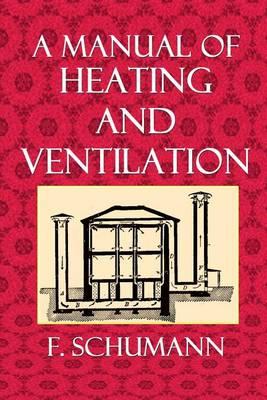Overview
An excerpt from the beginning of the first chapter: GENERAL PRINCIPLES. HOT WATER apparatus, where the temperature in the boiler does not exceed 212, should be adopted for buildings occupied continuously, and where steam from power boilers is not available, for instance: Schools, Court rooms, Hospitals and Dwellings; steam on the other hand, for Churches, Theatres, Public Halls occupied at intervals, and such other buildings where steam is used as power and the application of the waste for heating purposes is practicable. The choice of Direct or Indirect radiation, will depend on the construction of the building, and on the purposes for which it is intended. It is sometimes impossible to obtain sufficient space in walls for healing flues; or it may be objectionable to supply the radiators in the cellar or basement with air that might be contaminated by being taken from near the sidewalk or damp and unclean areas, when it would be an easy matter to supply direct radiators through openings in window breasts; on the other hand, direct radiators in a room may interfere with the decorations, or it may be difficult to supply the fresh air. Direct radiation is the most economical, for the reason that radiant heat is utilized, while in indirect radiation it is partially lost. DIRECT RADIATION. In direct radiation, the coils or radiators, are placed in the room (if possible on the coldest side) they are intended to warm; the fresh air being conveyed to them, through flues, to the lowest part of the coils, the flow of air being regulated by a damper. The fresh air is heated by contact with the radiators, the surrounding walls and solid objects absorbing a certain amount of radiant heat and again heating the air by contact. Radiant heat does not heat the air through which it passes, to any appreciable extent. The intensity of heat emitted by a plane surface, decreases with the sine of the angle formed between the direction of the rays, and the surface at the point of emission; therefore circular surfaces are more effectual than plane ones. INDIRECT RADIATION. In indirect radiation, the coils or radiators are placed in other rooms than those they are intended to heat, generally the basement or cellar as at radiator, the fresh air being conveyed to them through flues or ducts, and heated by contact, and thence through flues or ducts F., into the various rooms; the quantity of cold air being regulated by dampers. The walls and solid objects in the rooms are heated by contact with the warmed air only.
Full Product Details
Author: F Schumann
Publisher: Createspace
Imprint: Createspace
Dimensions:
Width: 15.20cm
, Height: 0.60cm
, Length: 22.90cm
Weight: 0.168kg
ISBN: 9781494711931
ISBN 10: 1494711931
Pages: 118
Publication Date: 16 December 2013
Audience:
General/trade
,
General
Format: Paperback
Publisher's Status: Active
Availability: Available To Order

We have confirmation that this item is in stock with the supplier. It will be ordered in for you and dispatched immediately.




